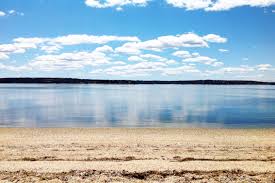The Sea Wall
Jayne English

so intimately, out there at the pen’s point or brush’s tip, do world and spirit wed. - Howard Nemerov
When I was young, our family friends had access to a deserted strip of beach. Over the summer, my mom would pile us five kids and two of our friends’ kids into our station wagon and let the waves and sun exhaust our energies. There was a sea wall with a makeshift ladder that we climbed to get from the car to the sand below. I remember going up and down that ladder as a six year old. It was positioned straight up against a wall of creosoted beams. That meant, for a small child, getting up the ladder was a combination of pulling up on one rung while pushing off on another, the simple physics of overcoming gravity by force. The physics was simple, but the effort was not.
Decades later, I realize that as artists – creators – the sea wall is a metaphor for two aspects of our vocation. First, it’s where we put in the effort to call things into being. In “Choruses from The Rock,” T.S. Eliot writes, “After much striving, after many obstacles;/For the work of creation is never without travail.” At the sea wall we prevail over obstacles that come between our attempts to take our vision of waves, sky, and sandwiches on the beach into the every day world of roads, framed views, and meals at the table. Part of the effort comes in working against the paradox of noisy backgrounds – where we live – those places that both hinder our art and are its wellspring. The sea wall is also the meeting point between the finite nature of our abilities and where we are (hopefully) set ablaze by Caedmon’s sudden angel.
Nemerov’s lines show us another aspect of the sea wall in the artist’s life. We begin to shape the language of our vision on the sea side of the wall. It’s where we take in the world by reading fiction and poetry, nonfiction, the lines on people’s faces. Where we listen to the wind, and music, and sounds of longing in the babel. And we watch movies, sun and shadow, postures in conversation. It’s when we attempt to translate the vision with “pen’s point or brush’s tip” that something inexplicable happens, “world and spirit wed.” Because humankind struggles to see by believing, we long to bring something of the invisible world to the visible. Maybe it’s partly through artists’ creations that God answers the prayer, “I believe, help my unbelief.” This is the artists’ call, to carry the stone jars up the ladder, and watch the water turn to wine.